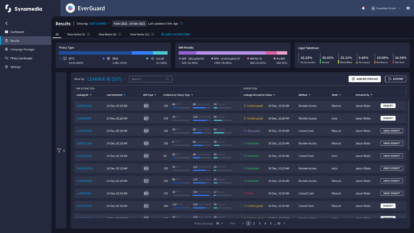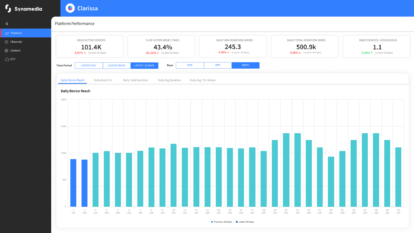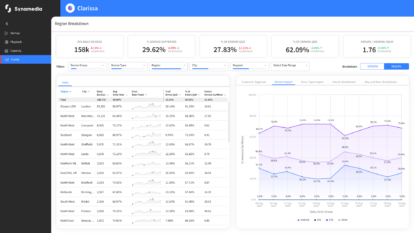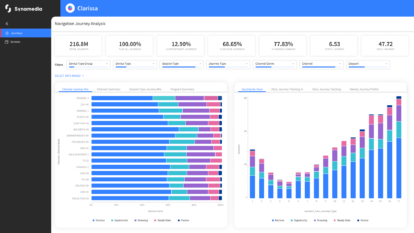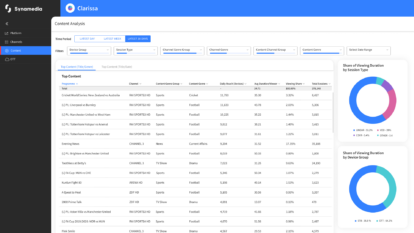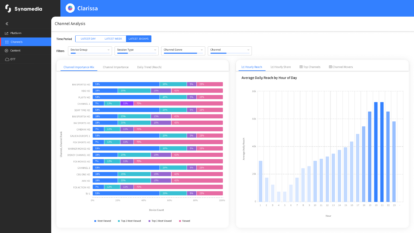Blink and you could miss it. The emergence of FAST and its breakneck speed of change sometimes makes one feel like they are competing with F1 and NASCAR drivers.
But rather than creating your own manic, nerve-racking version of the 1990s action movie Speed, where Keanu Reeves and Sandra Bullock must keep the bus moving at over 50 mph, it’s time to ease your foot off the accelerator, check you are heading in the right direction, and taking advantage of the latest innovations.
Currently, the vast majority of content owners are rushing headlong into a YouTube-style business model. If you are a content owner, this offers the advantage of a ready-made platform to quickly start monetising your VOD catalogue with new channels.
The reason for this haste is the ongoing land grab in a very competitive video streaming space. In the last two years, we have seen the switch from streaming’s inexorable rise to its stagnation: you only need to track Netflix’s share price to see this manifest itself. Today’s harsh reality is squeezed household budgets combined with fatigue from so many streaming subscriptions.
It has ripened the market for free ad-based services.
More haste, less speed
With this market pressure, the priority for content owners is to launch FAST channels quickly, without risk and at the lowest cost. And when you are on a speeding bus you would be forgiven for grabbing at the first attractive offer you see. But, buyer beware, all that glitters is not gold.
The price to pay is that you will be locked into a proprietary end-to-end system, one that has an unfavourable revenue-sharing model and limits control over the advertising placed around your content. Even if you attract viewers with your content, ad revenue will have to be shared. And guess what, even if you don’t attract many viewers, there is still a fee to pay.
But don’t despair. The great minds who turned the industry upside down with the Quortex just-in-time processing model have developed an alternative way to launch FAST channels. It’s based on a more granular and flexible approach, without lock-in and the lack of control.
And the best part? It combines both live and FAST channels on a single, multi-tenant SaaS platform that is easy to use.
Divide to conquer
As a content owner, you can use Quortex’s pay-as-you-go technology to build channels, with the flexibility to use your own preferred partners to monetise the service. By splitting the FAST workflow into smaller pieces, you gain control of your channel and its revenue potential.
One of our customers already supports several content owners to bring this model to market. And the benefits are impressive. With CDNs and storage already in place, the customer wanted to give content owners the flexibility of owning the workflow to create channels while maximising their monetisation opportunities through advertising.
Why just-in-time?
When launching a new niche cooking channel for example, it’s impossible to predict how many viewers might start watching at peak, or off-peak, times. Instead of the traditional just-in-case video processing model, Quortex’s just-in-time approach only processes a stream when a viewer requests it, irrespective of whether it is live or on-demand content. So, when viewer numbers are small, or even non-existent, this cuts cloud resources and costs dramatically, as well as saving energy and CO2.
Importantly, the one element of the movie Speed in our new approach is that it delivers a speedy time to market. In fact, we demonstrated this by building the first Quortex FAST channel in just ten minutes, which is a fraction of the time it took to upload the associated video assets. Without the need to sign a contract for a year-long relationship, this has the added value of being a low-risk business model.
We achieved this breakthrough by adding virtual inputs that sit next to live inputs. The content owner simply uploads their assets, or connects its existing AWS S3 bucket, and marks where to insert contextualized ads using their usual ad insertion workflow. This approach keeps the downstream workflows untouched and ensures that other workflow elements—including processing, targets and rules—are the same as those used for live sources. This means that features such as DRM, rules and analytics are available across both virtual and live inputs while adding FAST channels to the platform is as easy as creating a playlist.
Time to switch lanes
We are just beginning to imagine how many new FAST channels will emerge, allowing viewers to watch valued content for free.
If you are a content rights holder, why risk going into a partnership with a platform that takes a huge share of the revenue when our technology means you can create channels in the time it takes to shift gears.
It’s showtime: ditch the Speed bus that’s out of control and come along with us for a smooth, but speedy and financially attractive FAST ride instead.
To experience real just–in–time processing, create your account and try Quortex for FREE.
